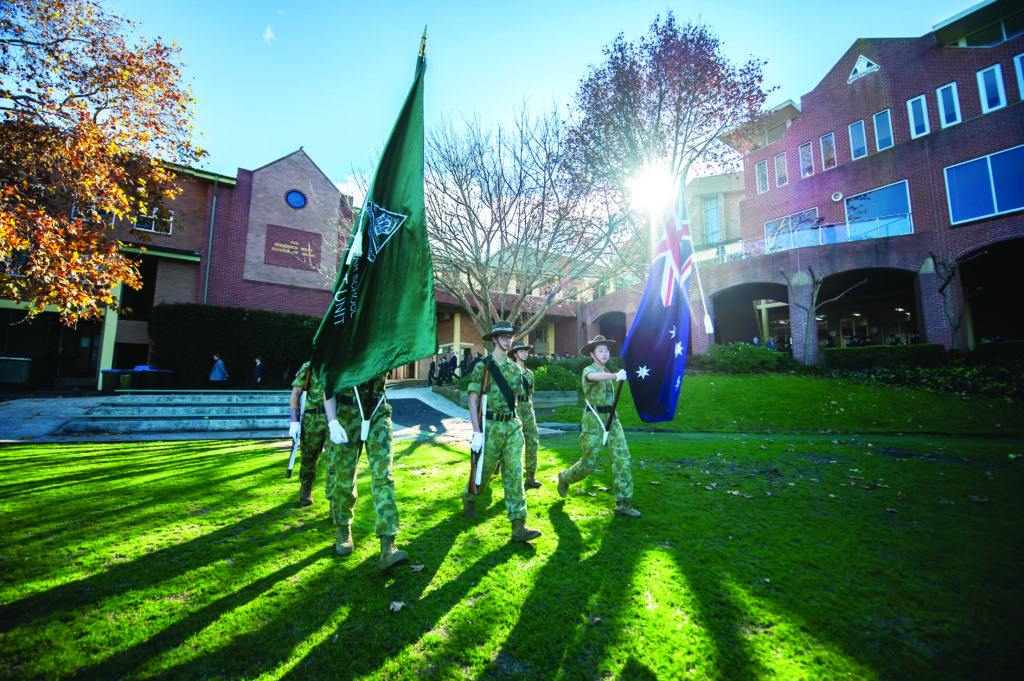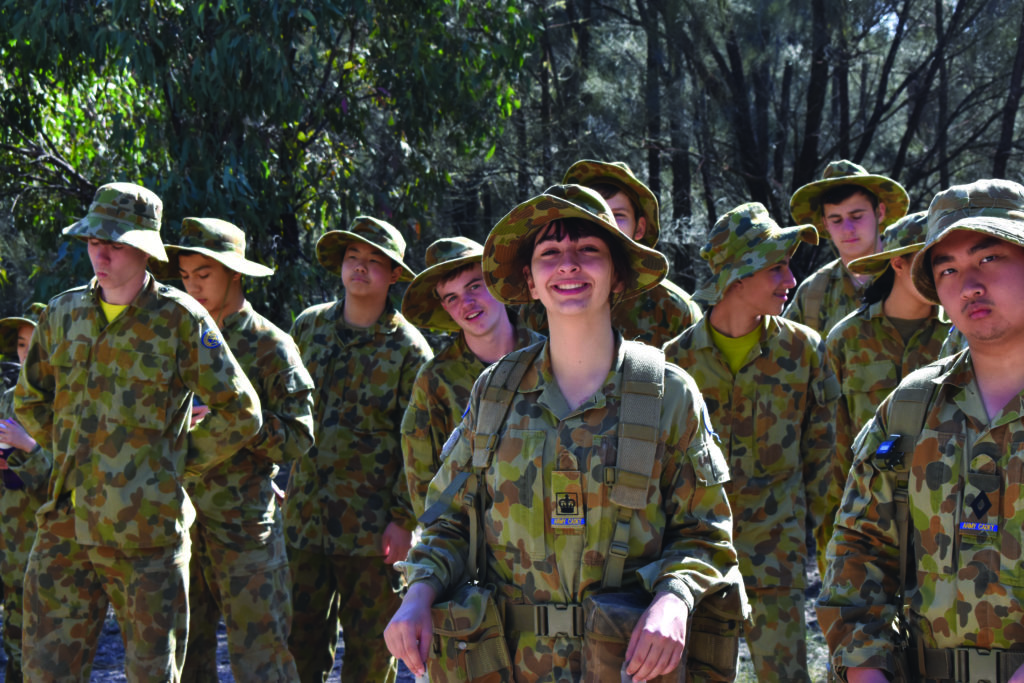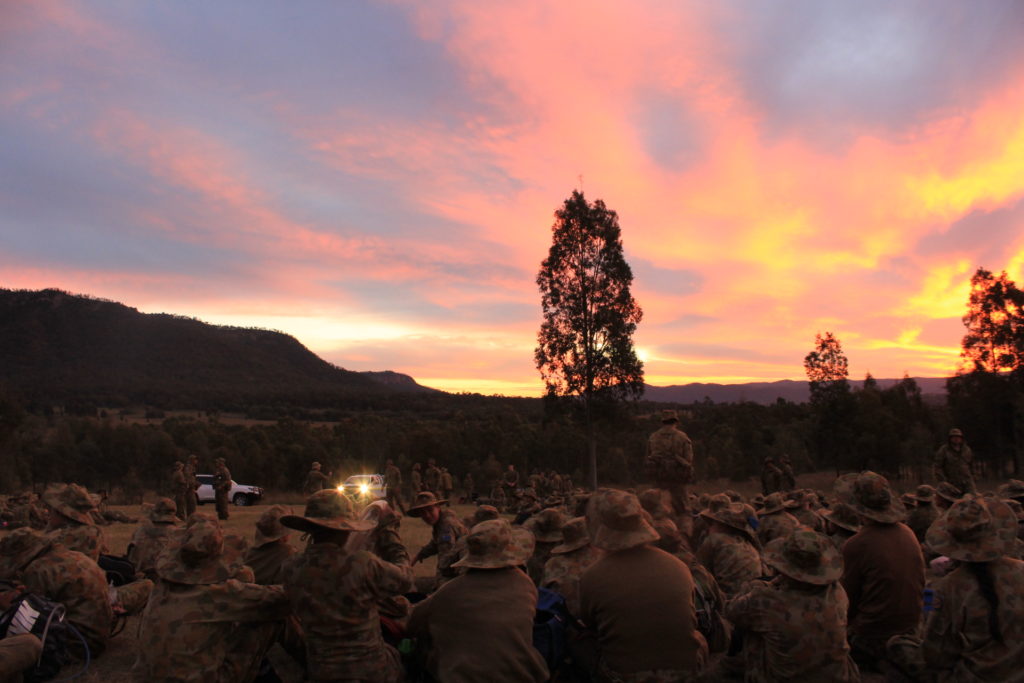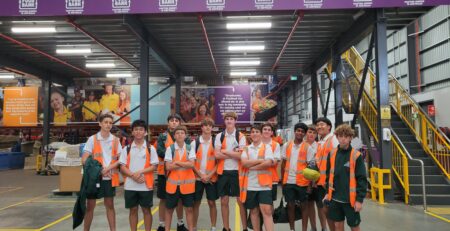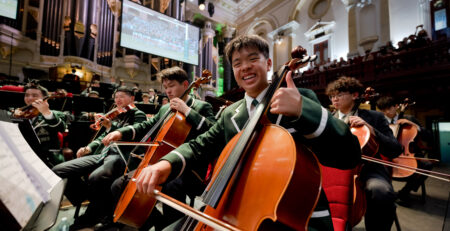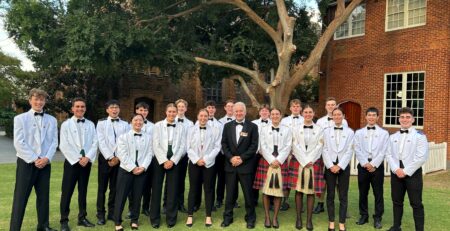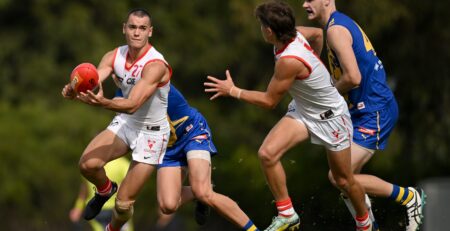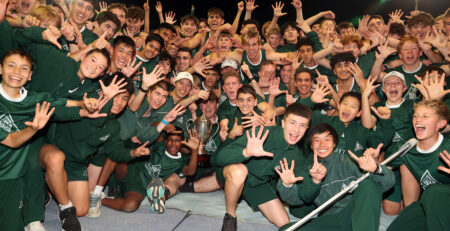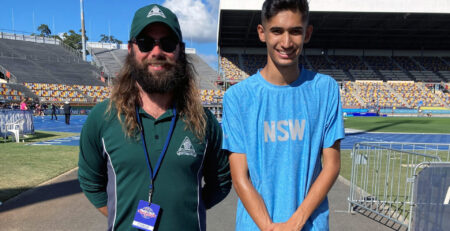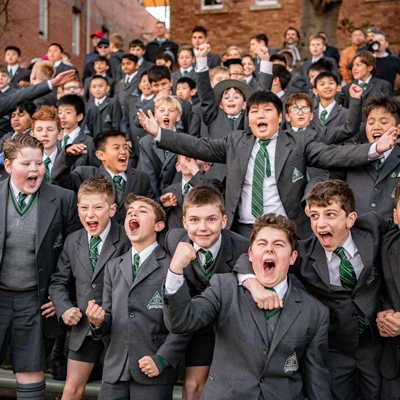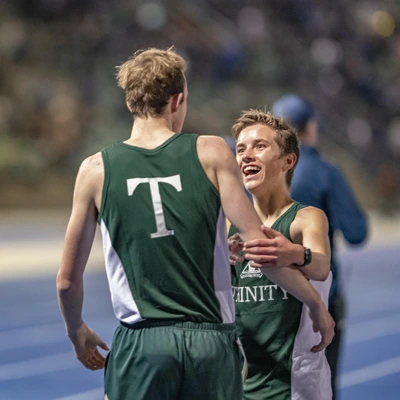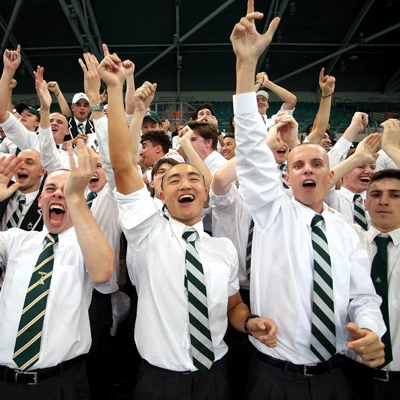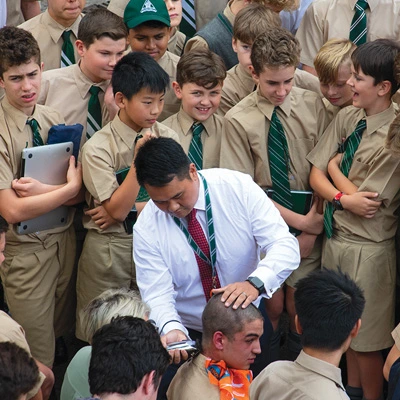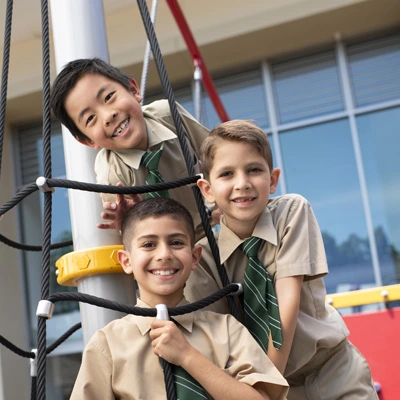Co-ed Cadets: a smooth transition
Gender not an issue says female OC
A co-ed Trinity Cadet Unit commanded by a woman … it must have seemed an impossibility during the eight decades when it was a man-only world.
But when Sue Draysey took charge in 2021, the issue of gender did not even register with her.
“When the Head Master approached me I did not even think about being female. It did not enter my mind,” said Ms Draysey, the second female Officer Commanding (OC) after Sheila Miller in 1997-98 and the first since the girls of Meriden joined in 2018.
“I want it to be that we don’t look at gender. I’m just Draysey, and the role of OC is just one of the staff.
“My leadership style is not necessarily a women’s leadership style, it is Sue Draysey’s leadership style, borne of years of experience in different jobs,” said the former Naval officer who joined Trinity as a casual in 2015 and has worked fulltime for three years as Careers and Student Pathways Advisor.
There’s no point in gender-blindness, however, and she declares “absolutely” that it’s important to have female leadership figures in a boy’s school.
“When I was appointed many male and female staff members said they were so glad a woman had the role.
“I’m so proud to be doing that (job) alongside women at Trinity, in a position of leadership.”
Her own three sons – Gordon (class of 2014), Patrick (2016) and William (2020) Barlow – were all Trinity Cadets.
“If they were reflecting seriously, I’m sure they would talk about how it fostered teamwork, stepping up to take responsibility and taking care of younger people,” she said.
“I chose to send my boys to Trinity because of the wonderful male leadership, the values of being empathetic, visionary, respectful and all of those beautiful things, and we have experienced all of that in the women who have led and taught them, too.”
She said the arrival of the Meriden girls, who make up almost one third of the 550-strong Cadet unit, had “broadened our students’ social skills, their ability to connect”.
“They work alongside each other. They’re all Cadets doing a job together.
“We are learning that another way is just as OK as my way.
“The girls have added an opportunity to make new friends, something different to look forward to, new people to work with.
“We are approaching our fourth year, when the boys coming up through the ranks haven’t known anything different.”
She acknowledged the great work done by her predecessor Richard Bishop in settling in the co-ed unit through this first phase.
The Trinity-Meriden partnership extends a trend towards co-ed CAS units over the past decade, with similar enterprises combining Knox and Ravenswood, and Waverley and St Catherine’s. Barker is a co-ed school.
The Knox unit last year had a female as its most senior Cadet officer, and this year’s Trinity unit had its first female RSM in Isabella Saville.
“Can you imagine that? It gives me goose bumps,” said Mrs Fiona Brennan, Meriden’s Coordinator of Cadets.
She said the venture had produced “nothing but positives” as far as she was concerned.
“One of the nicest things is having that camaraderie with boys and girls together. The way they get on together is lovely, and seeing the girls succeed is so empowering.
“The whole programme is wonderful.”
She said she was surprised that so many girls – 152 at latest count – had joined the Cadets because co-curricular activities at Meriden are not compulsory.
“They seem to love challenging themselves, getting out of their comfort zone and having friendship with the male Cadets.”
She said the ties between the two schools were long-standing. Her own father and brothers attended Trinity and “I’m still friends with Trinity mates from my own school days”.
Meriden’s 2020 Head Prefect Genevieve McKeown gave a keen insight into the Cadet experience for girls when she addressed a Trinity quad assembly on International Women’s Day this year.
She said she had “so many positive experiences” at Trinity but as duty student in charge at a promotions camp in 2019 she faced the “added difficulty of being shorter than those you are trying to be in charge of and having a very soft voice”.
“But the biggest challenge was trying to get the attention of male peers who didn’t seem to see me as an authority figure. So the question going through my mind was: why was I not given the same acknowledgement that other people in my role had when they didn’t even really know me?”
She told Trinity boys that when they stepped outside the school gates they would find themselves working alongside women.
“Maybe they’ll be in charge of you, or you could be in charge of them, or maybe you are working on a project together.
“I would argue we need a new mindset – to listen to other people’s passions before we express our own. “Like me, women deserve to have the ability to express and explore their passions, but this isn’t always facilitated in the workplace or in the household.”
She challenged Trinity boys to listen first and then speak, saying: “In a group of friends, do you listen to other people’s perspectives? When a woman or girl speaks, do you listen? And if your answer is no, then my challenge is to proactively change that.”
Ms Draysey described Cadets as a youth leadership programme.
“Cadets have the opportunity to learn skills that are useful in the outside world – teamwork, communication, problem solving, how you present yourself.”
Weekly lessons and parades, which take place on Wednesday afternoons, are designed to equip the Cadets to go on field exercises.
There are two major field exercises a year at army bases such as Singleton, Holsworthy and Majura, outside Canberra.
A recruitment bivouac each November introduces prospective Cadets to eating from ration packs and learning about navigation, camouflage and concealment, and movement through the bush.
There’s also a promotions camp at the end of Term 2 for those who nominate themselves for leadership positions, an opportunity taken equally by male and female Cadets.
As Ms Draysey said: “I like to refer to us as a co-ed unit spread over two campuses, rather than two schools. It’s a partnership.”


